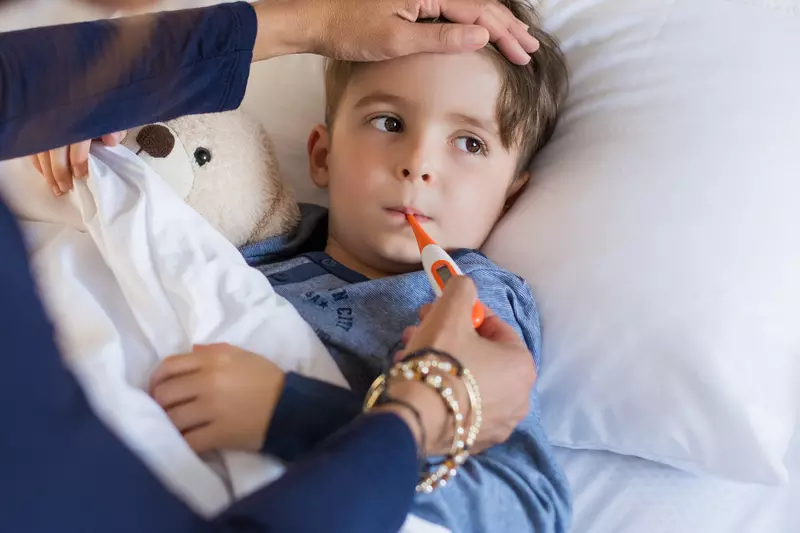- AdventHealth Hendersonville

When your child’s temperature starts rising, it’s easy to get frightened and panicky. But most fevers aren’t emergencies, and can be treated with fluids and over-the-counter pain relievers.
But how long does a fever have to last — or how high does the temperature have to go — before the fever becomes an emergency?
Knowing when to manage your child’s fever and when to take them to the doctor can give you confidence to make the right decisions for your child.
What’s a Fever?
You may have heard that our bodies keep a constant temperature of 98.6 degrees Fahrenheit. This isn’t exactly true — each person, including your child, has a normal temperature that tends to hover within a degree on either side of 98.6.
Even a healthy child’s temperature can change over a day, usually a bit lower in the morning and a bit higher as the day goes on.
In general, a temperature of over 100.4 degrees is considered a fever. For children five years or younger, the most accurate way to take a child’s temperature is with a rectal thermometer. For kids older than five, taking a temperature with a mouth thermometer is the best bet.
When to Call Your Doctor
It’s important to remember that fever is not an illness — it’s the body’s way of fighting illness. But when a fever goes too high or comes with other symptoms, a visit to a doctor or emergency department may be the right choice.
Your response to a child’s fever will depend on their age, temperature and other factors. According to the American Academy of Pediatricians, you should call your doctor or head to the emergency room if your child:
- is younger than three months of age and has a temperature of 100.4 or above
- has a temperature of 104 or above at any age
- has other symptoms, like a stiff neck, an unexplained rash, repeated vomiting or diarrhea, severe headache, sore throat or ear pain
- had a seizure
- has signs of dehydration like a dry mouth, sunken spot or many fewer wet diapers and isn’t able to take in liquids
- has a fever for more than 24 hours if they’re younger than 2, or more than three days if they’re 2 or older
Staying Hydrated
Even if your child doesn’t need to see a doctor, there are steps you can take to keep them comfortable and safe.
The most important is to keep them hydrated with fluids like juice, water or popsicles.
You can also give a child over-the-counter medicine like acetaminophen (such as Tylenol) or ibuprofen (such as Advil). But be sure to give them the correct dose. For kids under 2 years of age, call a pediatrician or pharmacist to get the correct dose.
If your child has a fever, do not overdress them. Some other steps sometimes taken to reduce fevers — like alcohol baths and ice packs — are no longer recommended for children.
It’s also helpful to have a plan in place if your child’s fever gets too high. Having your pediatrician’s phone number and an emergency department option ready is a smart idea.
Knowing what steps to take when your child’s temperature rises is the best way to stay calm during a scary situation. As a parent, you know that any stress you can avoid is a favor to your body and mind.
If your child’s fever requires immediate attention, AdventHealth’s Emergency Department offers convenient care.



